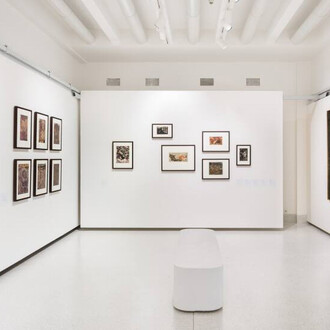How did photography reflect the revolutionary year of 1989? This exhibition was organised to commemorate the 30th anniversary of the Velvet Revolution as part of the project Havel na Hrad! (Havel to the Castle!). Yet 1989 was not merely exceptional for its political developments proper but also for the medium that painstakingly recorded them – the medium of photography. Several exhibitions and publications celebrated 150 years since the official announcement of photography’s discovery. Likely, without photographers suspecting this, it was the final year they would spend working in the institutional framework they had been used to for years. The lives of many changed radically after the Revolution.
The irresistible magnetism of the Velvet Revolution’s anniversary inspired us to organise an exhibition commemorating this important event. Its objective was to present a critical assessment of the state of Czech photography in 1989 from a distance of three decades. We lay emphasis on distinctive photographic projects and long-term approaches. In many cases, we joined hands with artists, sifted through their archives and tried to select the most distinctive photographs that withstand critical scrutiny thirty years later and remain intelligible today, even to generations who have not experienced the age personally.
The political events of 1989 caught Czech photography in peak form. Documentary approaches especially enjoyed an extraordinary position throughout the 1980s. They were one way to guard the purity of one’s existence in an unfortunate political situation and to counter official propaganda. Such a form of expression naturally included resistance and nonconformism, but it also earned the disfavour of the authorities. Nevertheless, artists photographed the regime’s symbols (Lubomír Kotek), shop windows that told of the dire economic and political situation (Iren Stehli), reflected critically on official holidays (Vladimír Birgus, Josef Moucha), portrayed the underground scene (Bohdan Holomíček, Jaroslav Prokop) photographed the disintegration of society and in settings including the small-town (Gustav Aulehla, Jaroslav Bárta) and the village (Jindřich Štreit).
State-controlled television only paid the Revolution dilatory attention at first, and it was not until employees ramped up pressure that more objective news coverage appeared, so photographers were responsible for articulating its dominant visual style from early on. They recorded the 1988 demonstration at Škroupovo náměstí in Prague, events surrounding so-called Palach Week, the August invasion anniversary and the demonstration on 28 October (Karel Bucháček, Lubomír Kotek), as well as the demonstrations on 17 November at Albertov and Národní třída and the ensuing revolutionary events (Radovan Boček, Karel Bucháček, Jan Jindra, Roman Sejkot, Pavel Štecha).
This exhibition about 1989 does not simply bear witness to past events. Photographs always also testify something of themselves. We have also tried to explore alternative strategies that diverge from the technique of contemporary snapshot. Images of anti-government protests are accompanied at the exhibition by pictures that were likewise created in 1989, except in these, photographers reflected on everyday life and social problems. Miroslav Machotka applied principles of snapshot photography outside the common documentary field, searching for equivalents, which in some cases contain references to society and the age. Jiří Hanke thematised a diary-like principle in producing regular photographs from the window of his apartment; the images of Libuše Jarcovjáková serve as a raw diary in the spirit of a snapshot aesthetic, recording her surroundings, parties and surprising encounters on her way through nocturnal Prague. Trio Ivan Lutterer, Jan Malý and Jiří Poláček created portraits of ‘Czech Man’ in an improvised studio and portrayed protesters’ faces in 1989. Jaroslav Bárta first tested his method of comparing old and new views of rural settlements in 1988 and unfolded this approach in 1989 on the example of the town of Česká Lípa (Böhmisch Leipa).
Pavel Hečko’s tradition-beholden portraits from the late 1980s remind viewers of the Czech aristocracy. Traditionalism was also programmatically claimed by the members of The Brotherhood, who entered the scene in the late 1980s and whose art effortlessly fused the media of painting, photography and music. The everyday atmosphere of the late Normalisation period was unwittingly captured in the conceptually attuned projects of Jiří Širgut, who utilized his camera and long exposure times to layer photographic images, as well as by Lukáš Jasanský and Martin Polák in their series Men, with ironic use of the principle of repetition and references to the genre of photo report. While employed as a night guard at the National Gallery, Jiří Kovanda made minute subversive interventions in the institution’s operation outside official opening hours.
The year 1989 will doubtless remain memorable for having brought us the first glimpses of freedom and until then hardly imaginable possibilities of fully, freely and responsibly pursuing one’s life path. It was a single year, the last of the 1980s, whose consequences we live to this day.
















